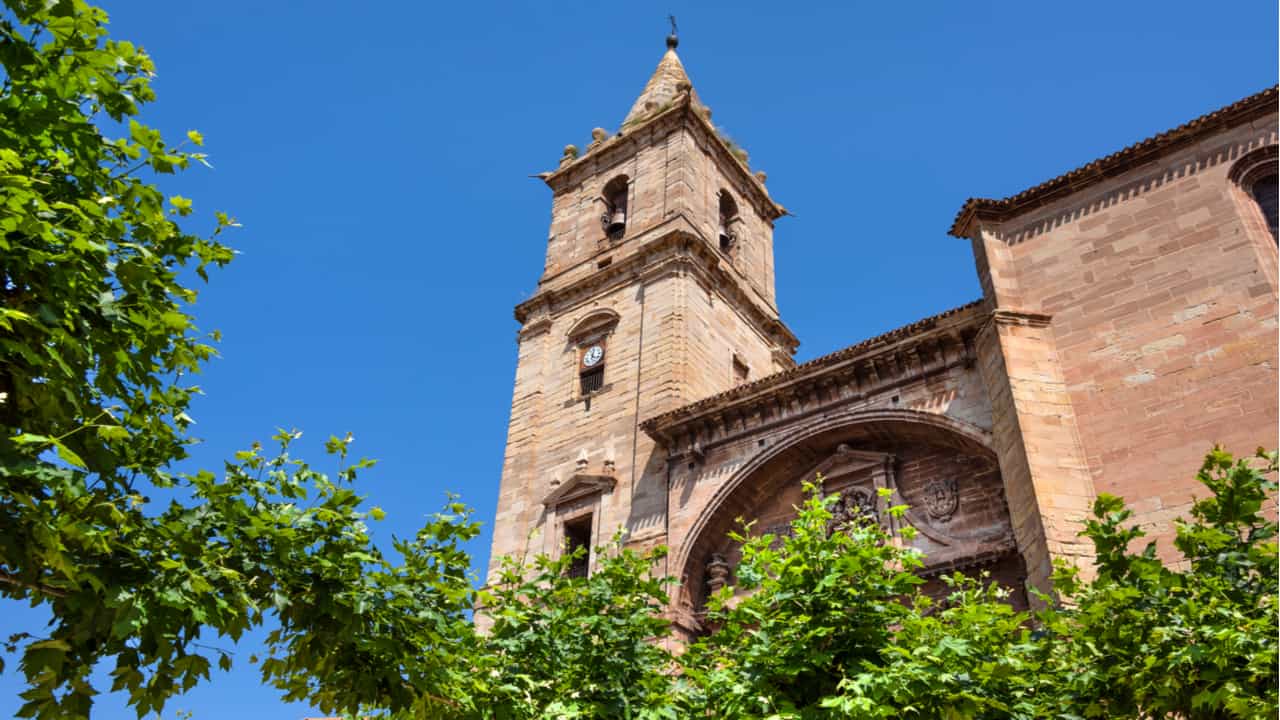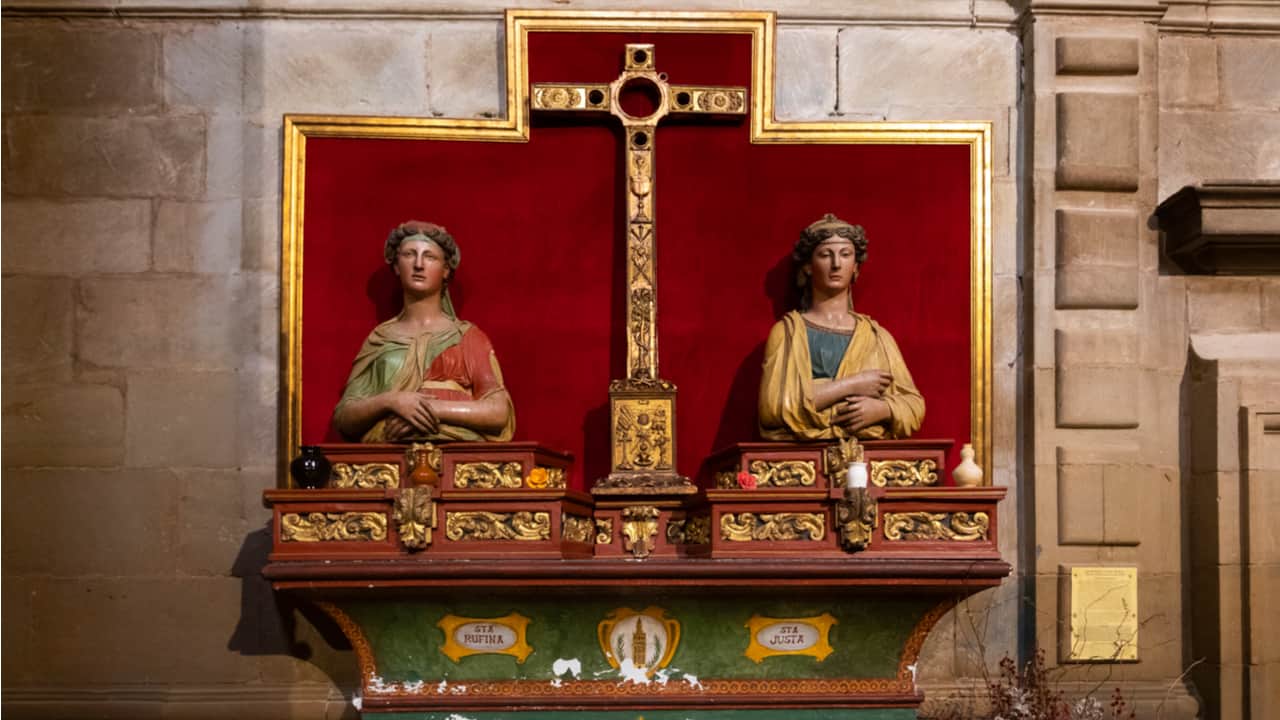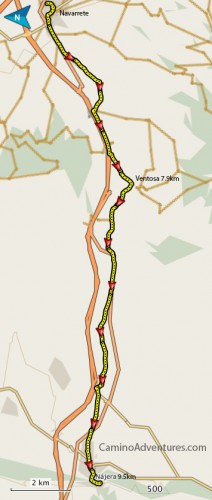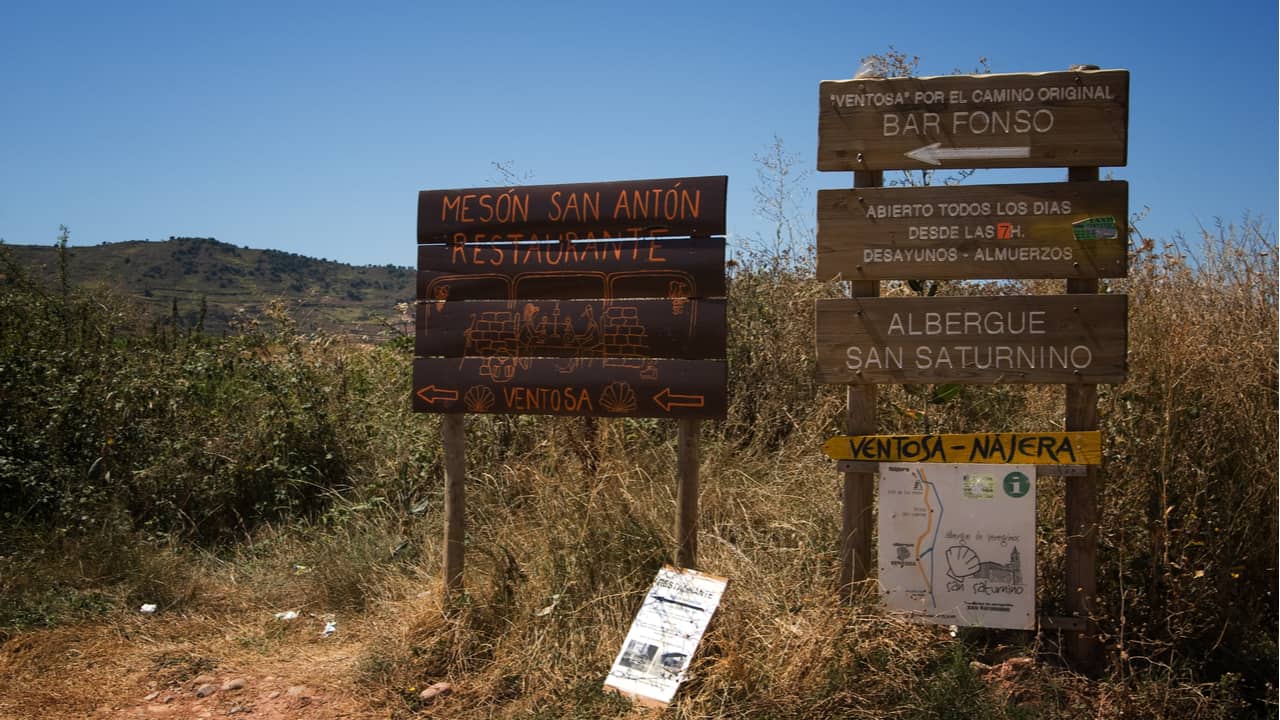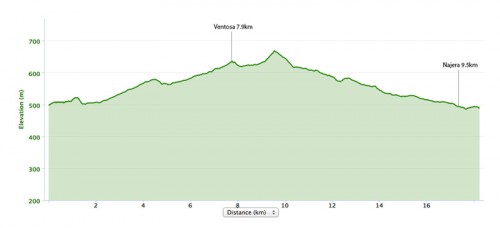Navarrete is a municipality in the Autonomous Community of La Rioja ( Spain ). It lies on the Camino Frances route. Because of the culture and history reflected in its streets and monuments, it has been declared a required stop for all pilgrims.
Navarrete is known as the “Historic-Artistic Complex” of Spain. It is currently the only pottery center in the autonomous community of La Rioja, and it was formerly one of the most important centers in Northern Spain.
Nothing remains of the original Navarrete castle and defensive walls, they were destroyed in the early 16th century during the war to incorporate Navarrete into Spain.
The village still retains its 16th century concentric street, best viewed on a map from above.
The Parish Church of the Assumption from the 16th century is a magnificent triple aisled construction illustrating a mix of Renaissance coffered barrel vaults and Plateresque motifs, the first of their style in Rioja, and one of the most stunning Baroque retablos in Spain.
This area has me thinking about destruction and growth. Is there something in me that needs to be torn down and rebuilt better?
Today’s Walk: 17.4 km
Day nine is a short day and not all pilgrims will walk as little as this. However, it is good to have days that are not as hard on the body occasionally.
During the first half of the route today the path hugs the main N120. After it crosses the road, about halfway, the track is further from the road. It is an easy 17.4 km along red earth tracks among the local vineyards, great in the dry but very muddy if wet.
Ventosa is the only available rest point for coffee or water, it is 7.9 km out of Navarrete. Shortly after Ventosa you will see up on your left the Alto de San Anton, at the top of this is the ruins of the Monastery of San Anton.
The monastery is off the Camino and to visit it you will need to detour. The only real climb of the day is into the hilltop village of Ventosa and again shortly afterward, however, the climb is not steep or long.
Just as you leave Navarrete you will pass the cemetery which was built in 1886. The Romanesque entrance was once part of the Hospital at San Juan de Acre, which we passed the previous day walking into Navarrete.
The capitals depict a battle between Roland and the Giant Ferragut, of which there are many legends, and various pilgrim scenes. However, the capitals although extraordinary are also quite eroded by the weather.
Ventosa
7.9 km, water, cafe, restaurant, bar
Ventosa is a village with only 160 inhabitants, with little to hold the passing pilgrim. It is the only place to stop during today for lunch and water.
Shortly after Ventosa the path winds up and passes between two small hills where pilgrims have built mounds of small stones. To the left are the ruins of a medieval monastery and hospice of San Anton. To the right is the killing ground where Roland apparently slew Ferragut.
There are many legends around this confrontation. The one where Roland threw a stone down the hill and killed Ferragut, another where the hill was only a rock.
However, the following is the most elaborate: Ferragut had taken several knights from Charlemagne army prisoner and Roland begs to fight for their release. Roland is allowed to fight Ferragut and after they have both fought for many hours they agree to take a rest.
After sleep, Ferragut and Roland wake to continue their battle, however, before starting, they have a theological discussion where they agree that the winner’s religion is the only true religion. Of course, Roland wins, this time by stabbing Ferragut in the navel, his only weak point revealed during their theological discussion.
The next stop, Najera, is 9.5 km from Ventosa.

I love hiking, backpacking, and camping. From the Camino de Santiago to the West Highland Way in Scotland or simply a great day hike on the weekend. Hiking refreshes me, my mind, and keeps my body reasonably fit. So far I have walked three Camino routes and many other long distance hikes in the UK, Canada, and around the rest of Europe. One of the best was my hike up Ben Nevis.

